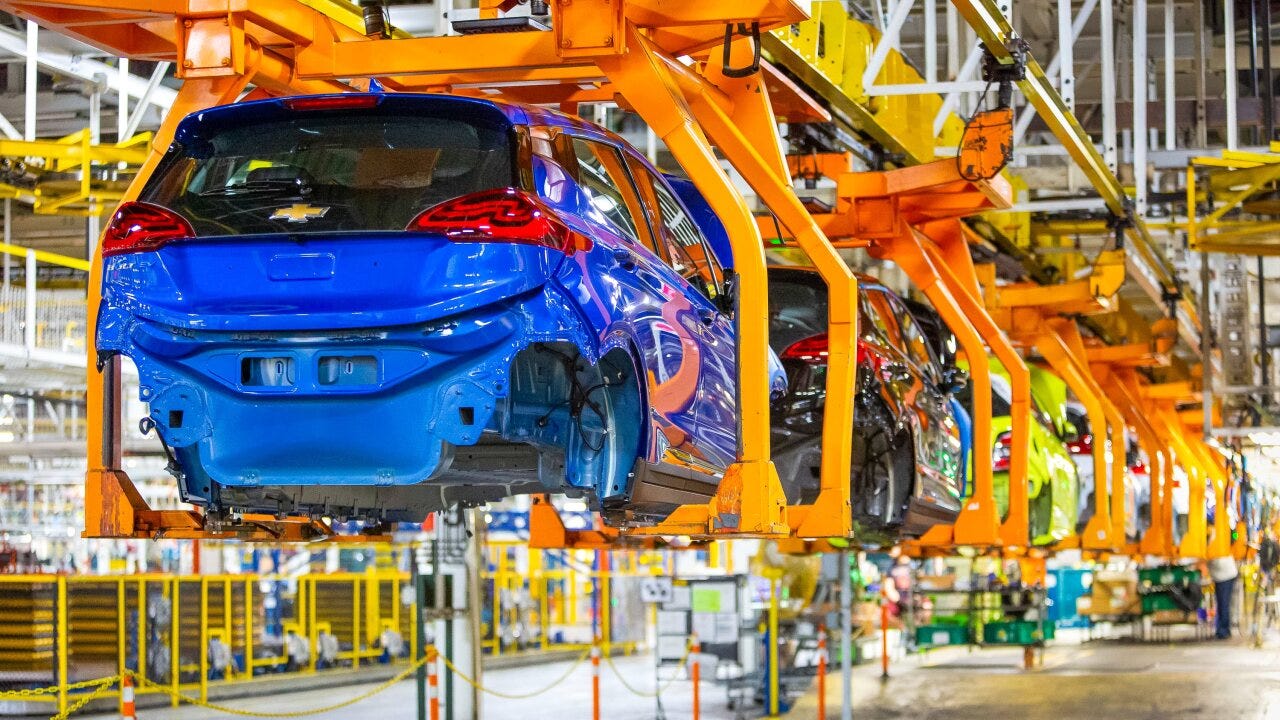The Push-Pull Boundary as a Tool for Competitive Advantage
"Just-in-time" manufacturing is far from dead.
You’re reading Flow of Funds, a Substack newsletter that seeks to dig deeper into the intersection of global supply chains and the businesses that surround them. Please go ahead and subscribe—it’s free!—to get these periodic updates sent directly to your inbox. I wouldn’t send you anything that I would not want to read myself!
Brooke Sutherland at Bloomberg wrote a great piece on “just-in-time” manufacturing and how it’s here to stay even in light of pandemic-related supply chain disruptions. This is absolutely the case: the marketplace remains competitive and advances in technology continue to make it easier than ever for parties across supply chains to communicate their purchasing needs. In between the lines of Sutherland’s article, however, lies a reckoning between the “push” and “pull” methods of inventory control and an exploration of how a thoughtful and reactive balance between the two can help build more resilient, not just cheaper, supply chains.
“Push” Versus “Pull” Systems
Manufacturing process design inherently involves one or both of “push” and “pull” inventory movements. A “push” system, as the name implies, proactively sends inventory—raw materials, work in process, and finished goods—throughout the network as needed based on requirements forecasts at each point in the process. A “pull” system, on the other hand, does not move inventory until it has been requested by the customer or other downstream party. Imagine pulling at the edge of a taut fishing net and watching the rest of the net move in response. “Just-in-time” manufacturing relies on “pull” methods to place inventory only where and when it is needed, minimizing inventory investments and the risk of spoilage and obsolescence.

The Push-Pull Boundary…
Few, if any, manufacturing systems are purely “push” or “pull” in nature. Safety stocks often exist throughout a system, and information asymmetries and timing differences abound. Most systems are in fact combinations of both, possibly switching between the two paradigms more than once as a product weaves its way across geographies and suppliers. Popular thinking, however, tends to create a false binary with an entire system simply being described as “lean” (i.e., “pull”) or not, with no further nuance.
The push-pull boundary, the point at which a manufacturing process shifts between “push” and “pull” catalysts (or vice versa), might not be well defined. An unnecessary buildup of safety stocks at a given point, for example, might falsely appear to be a backstop between uncertain downstream “pulls” and a steady upstream “push” when in reality it is just an inefficient link in a continuous “push” process. Defining this boundary more clearly, however, may help build an advantage against competitors.
…and Its Use as a Tool for Competitive Advantage
If what gets measured truly does get managed, it should stand that measuring internal processes and managing them to efficiency should be a central focus of supply chain professionals today. Marketplaces are competitive enough as they are, and the product designers and salespeople at either end of the value chain can only do so much. Efficiency, however, must not be purely financial.
Supply chain design is an exercise in tradeoffs. “Push” frameworks are naturally more reliable, as more product throughout a system inherently reduces the risk of shortages. “Pull” frameworks, on the other hand, are naturally less expensive. Less inventory is carried throughout that system, creating leaner balance sheets (read: higher returns on assets), and the lower risk of spoilage and obsolescence helps profitability.
This is fine and dandy until we think about where in the process we need the reliability of “push” and where we need the cost efficiencies of “pull”. Lean canon dictates that we place the push-pull boundary as far upstream towards the beginning of the process as possible in order to capture as many cost efficiencies as we can. We and our competitors do so, urged not as much by our own potential cost savings as by the competitive pressures of those around us. And the lessons of the ongoing pandemic have reminded us of many of the dangers of running too lean for too long: when faced with an out-of-stock product, just 15 percent of customers are likely to wait for it to become available and repeated “stock-outs” have been shown to reduce customer loyalty. Cheaper may often be better, but that axiom fails to consider survivorship.
Perhaps our focus should instead be on the benefits (financial and otherwise) of product availability and reputation among customers. Thinking of the push-pull boundary as a tool which may be moved based on market conditions may help build truly dynamic supply chains—not simply chains which quickly react internally to changes in demand, but supply chains which themselves react in structure to changes in reality. Building renewed and resilient supply chains has become an issue front and center for supply chain professionals as they navigate a post-pandemic world, and knowing where the push-pull boundaries in their systems lie is just the beginning.



